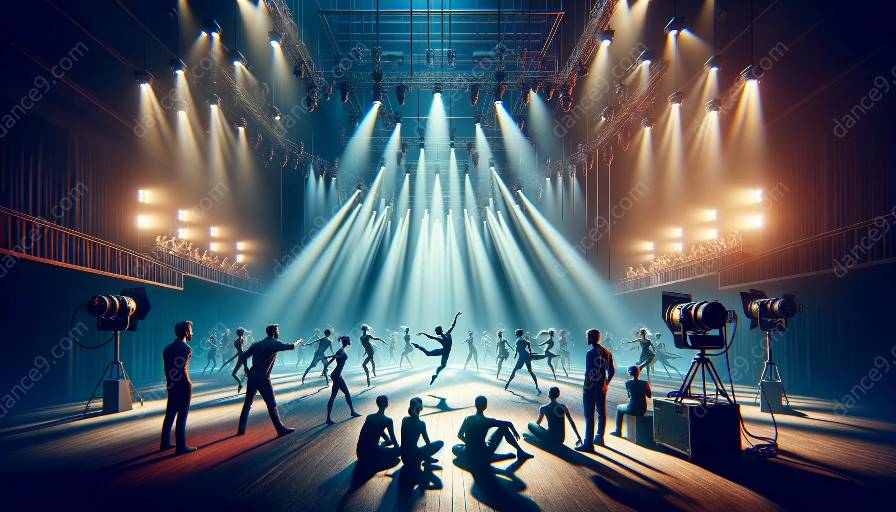Choreography and lighting techniques play crucial roles in the world of performing arts, particularly in the realm of dance. The intricate balance between movement and illumination creates captivating performances that engage and inspire audiences, and understanding the synergy between these elements brings new dimensions to the art form.
The Art of Choreography
Choreography is the art of designing sequences of movements and steps for dance performances. It involves the arrangement of physical movements in space and time, encompassing spatial patterns, formations, and rhythm. A choreographer is responsible for creatively shaping the movements, developing sequences, and imparting emotional and narrative elements into the dance. They work closely with dancers to bring their vision to life, considering the dynamics of the human body and the expressive potential of movement.
Exploring Choreographic Elements
Choreography incorporates a myriad of elements to craft compelling dance pieces. These elements include spatial design, dynamics, timing, and expressive qualities. Spatial design refers to the arrangement of dancers on stage, utilizing levels, groupings, and pathways to create visual impact. Dynamics encompass the energy, force, and tension in movement, adding depth and contrast to the performance. Timing and rhythm dictate the tempo and pace of the dance, while expressive qualities convey emotions, storytelling, and artistic intent.
The Role of Lighting
Lighting serves as a powerful tool in enhancing the impact of choreography. It shapes the visual atmosphere, highlights focal points, and accentuates the movements of dancers. Through strategic illumination, lighting designers create mood, depth, and texture within the performance space, working in harmony with the choreography to amplify its artistic expression.
Merging Choreography with Lighting Techniques
When choreography and lighting techniques converge, they have the potential to elevate the dance performance to new heights. The interplay between movement and illumination becomes a symbiotic relationship, where each element informs and enhances the other. Lighting can accentuate the spatial patterns, accentuate dynamics, and evoke emotions, seamlessly integrating with the choreographic elements to create a multi-dimensional experience for the audience.
Utilizing Lighting as a Creative Tool
Lighting designers collaborate with choreographers to understand the mood, themes, and narrative of the dance piece, using light to evoke specific atmospheres and evoke emotional responses from the audience. They employ various lighting techniques, such as spotlights, color washes, gobos, and dynamic changes in intensity and direction, to sculpt the visual landscape of the performance. The interplay of light and shadow adds depth and dimension to the choreography, enhancing the visual storytelling and captivating the spectators.
Balancing Technical Precision with Artistic Vision
The integration of choreography and lighting techniques requires a delicate balance of technical precision and artistic vision. Choreographers and lighting designers collaborate to synchronize the timing of movements with changes in lighting, ensuring seamless transitions and impactful visual moments. They consider how light interacts with the dancers' bodies, costumes, and props, using the interplay of light and shade to create striking visual compositions that complement the choreographic narrative.
Conclusion
Choreography and lighting techniques are integral components that shape the landscape of dance performances. The synergy between movement and illumination creates a captivating fusion of artistic expression, drawing audiences into a mesmerizing realm of visual storytelling. Understanding the interplay between choreography and lighting techniques enriches the appreciation of dance as a multi-sensory experience, showcasing the power of collaboration and innovation in the performing arts.






































